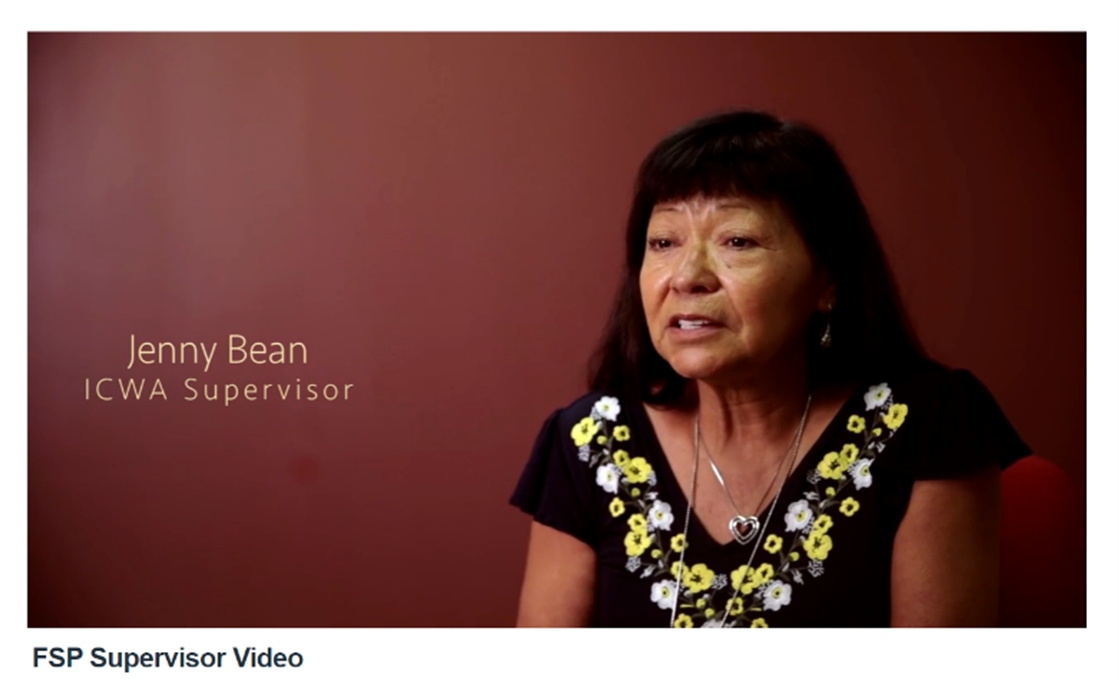Onboarding Program
What is onboarding and why was this intervention selected?
Onboarding (also referred to organizational socialization) is “…the process by which newcomers make the transition from being organizational outsiders to being insiders” (Bauer, et al., 2007, p. 707). The overall goal of onboarding is to facilitate newcomer adjustment (Bauer & Erdogan, 2011), meaning that new employees understand the key tasks of their job (i.e., role clarity), have confidence in their ability to perform the key tasks of their job (i.e., self-efficacy), feel like they are an accepted member of the organization (i.e., social acceptance), and understand the organization’s culture (e.g., goals, values, norms).
 The Eastern Band of Cherokee Indians (EBCI) worked with the Quality Improvement Center for Workforce Development (QIC-WD) to design a new onboarding program for their Family Safety Program (FSP). The onboarding intervention is a 5-week program that orients new hires to FSP and each of the team units through various activities and shadowing opportunities. During the needs assessment process, concerns about role clarity and social integration (especially across team units) arose during the root cause analysis exercises. It was determined that these root causes could be simultaneously addressed through a more robust and structured onboarding program. The onboarding program intentionally included an introduction to the work conducted by each team unit, including shadowing of staff in each unit to promote a shared understanding of responsibilities and social integration across teams.
The Eastern Band of Cherokee Indians (EBCI) worked with the Quality Improvement Center for Workforce Development (QIC-WD) to design a new onboarding program for their Family Safety Program (FSP). The onboarding intervention is a 5-week program that orients new hires to FSP and each of the team units through various activities and shadowing opportunities. During the needs assessment process, concerns about role clarity and social integration (especially across team units) arose during the root cause analysis exercises. It was determined that these root causes could be simultaneously addressed through a more robust and structured onboarding program. The onboarding program intentionally included an introduction to the work conducted by each team unit, including shadowing of staff in each unit to promote a shared understanding of responsibilities and social integration across teams.
What is the impact of onboarding?
Onboarding strategies are associated with important workforce outcomes, including job performance, turnover, perceptions of fit, job satisfaction, organizational commitment, and intentions to quit (Bauer et al., 2007; Saks et al., 2007). In general, onboarding is most effective when it involves cohorts of newcomers who form collective experiences, planned and formalized activities, a pre-determined sequence of experiences according to an established schedule, support and mentoring from existing workers, and recognition and support of newcomers’ attitudes, skills, and abilities (Bauer et al., 2007; Saks et al., 2007). The two onboarding tactics most strongly connected to outcomes are support from existing employees and support of newcomers’ attitudes, skills, and abilities (Saks et al., 2007). For a summary of the research about onboarding see the QIC-WD’s Umbrella Summary on Organizational Socialization.
How was EBCI’s onboarding program developed?
The QIC-WD team worked very closely with the EBCI FSP Site Implementation Manager (SIM) and the FSP supervisors to identify which content was most important to include in the onboarding program for all new staff. To address the root causes that emerged during the needs assessment process, the team wanted to be sure the onboarding program included an immersive introduction to each team unit that included shadowing workers from each unit. It was an existing expectation for new hires to read and be familiar with the entirety of FSP Policies and Procedures, so that review was incorporated into the onboarding program in manageable portions, along with review questions to enhance understanding. The addition of the mock family case was important for demonstrating how the details outlined in policy actually operated in the day-to-day work at FSP. Additionally, it was decided that information about Cherokee history, culture, and best practice for working with families was important to highlight, to ensure that new staff receive this information immediately upon hire. Locally recognized experts led the development of this content. For additional information about onboarding best practices, see the Society of Human Resource Management Foundation’s Onboarding new employees: Maximizing success.
What research gap is the QIC-WD addressing?
Additional research is needed to assess the relative impact of specific onboarding tactics on organizational outcomes. For practical reasons, however, the QIC-WD was unable to vary the specific tactics due to the small agency size with only one office site. This study will test whether individuals hired under the new, formalized onboarding process report greater levels of newcomer adjustment compared with those hired previously using a more informal process. (See the Evaluation Overview for more information.) This will contribute to the body of knowledge by providing guidance for best practices for onboarding in tribal child welfare agencies.